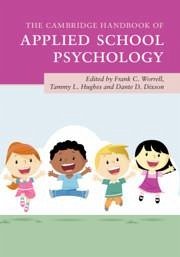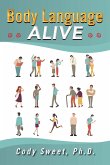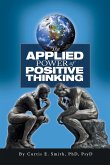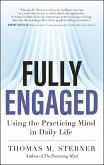The Cambridge Handbook of Applied School Psychology
Herausgeber: Worrell, Frank C; Dixson, Dante D; Hughes, Tammy L
The Cambridge Handbook of Applied School Psychology
Herausgeber: Worrell, Frank C; Dixson, Dante D; Hughes, Tammy L
- Broschiertes Buch
- Merkliste
- Auf die Merkliste
- Bewerten Bewerten
- Teilen
- Produkt teilen
- Produkterinnerung
- Produkterinnerung
For clinical practitioners, school psychologists, and education researchers, state-of-the-art research is harnessed to provide practical recommendations for those working with school-age children. This book shows you the reasoning behind best practice behaviors in school environments and why engaging correctly with students is integral to success.
Andere Kunden interessierten sich auch für
![Soul Alchemy Create The Life You Choose Soul Alchemy Create The Life You Choose]() Sue CawthorneSoul Alchemy Create The Life You Choose22,99 €
Sue CawthorneSoul Alchemy Create The Life You Choose22,99 €![For The Curious For The Curious]() Melissa Kate RichardsonFor The Curious18,99 €
Melissa Kate RichardsonFor The Curious18,99 €![Body Language ALIVE Body Language ALIVE]() Cody SweetBody Language ALIVE35,99 €
Cody SweetBody Language ALIVE35,99 €![The Harvard Business School Guide to Careers in Finance 2001 The Harvard Business School Guide to Careers in Finance 2001]() The Harvard Business School Guide to Careers in Finance 200121,99 €
The Harvard Business School Guide to Careers in Finance 200121,99 €![The Applied Power of Positive Thinking The Applied Power of Positive Thinking]() Curtis E. SmithThe Applied Power of Positive Thinking20,99 €
Curtis E. SmithThe Applied Power of Positive Thinking20,99 €![The Earth School Guide to Mind Spirit Mapping The Earth School Guide to Mind Spirit Mapping]() Sarah BreenThe Earth School Guide to Mind Spirit Mapping34,99 €
Sarah BreenThe Earth School Guide to Mind Spirit Mapping34,99 €![Fully Engaged Fully Engaged]() Thomas M SternerFully Engaged14,99 €
Thomas M SternerFully Engaged14,99 €-
-
-
For clinical practitioners, school psychologists, and education researchers, state-of-the-art research is harnessed to provide practical recommendations for those working with school-age children. This book shows you the reasoning behind best practice behaviors in school environments and why engaging correctly with students is integral to success.
Hinweis: Dieser Artikel kann nur an eine deutsche Lieferadresse ausgeliefert werden.
Hinweis: Dieser Artikel kann nur an eine deutsche Lieferadresse ausgeliefert werden.
Produktdetails
- Produktdetails
- Verlag: Cambridge University Press
- Seitenzahl: 600
- Erscheinungstermin: 17. September 2020
- Englisch
- Abmessung: 254mm x 178mm x 37mm
- Gewicht: 1238g
- ISBN-13: 9781108401258
- ISBN-10: 1108401252
- Artikelnr.: 58853895
- Herstellerkennzeichnung
- Libri GmbH
- Europaallee 1
- 36244 Bad Hersfeld
- gpsr@libri.de
- Verlag: Cambridge University Press
- Seitenzahl: 600
- Erscheinungstermin: 17. September 2020
- Englisch
- Abmessung: 254mm x 178mm x 37mm
- Gewicht: 1238g
- ISBN-13: 9781108401258
- ISBN-10: 1108401252
- Artikelnr.: 58853895
- Herstellerkennzeichnung
- Libri GmbH
- Europaallee 1
- 36244 Bad Hersfeld
- gpsr@libri.de
1. Broadening the focus of school psychology practice Frank C. Worrell,
Tammy L. Hughes and Dante D. Dixson; Part I. Individual-Level Academic
Interventions: 2. Enhancing reading motivation in schools Jamie Zibulsky
and Lily Schwartz; 3. Addressing won't do issues in mathematics Christopher
H. Skinner, Shelby Wright and Elizabeth McCallum; 4. Learning disabilities
in mathematics Amanda McKerracher; 5. Executive function and school
performance Cynthia A. Riccio and Maria J. Castro; Part II. Teacher and
System-Level Interventions: 6. School-based interventions Nicholas Gelbar
and Lea A. Theodore; 7. Helping teachers use progress monitoring for
decision making Matthew K. Burns, Lisa Aguilar and Crystal Taylor; 8.
Working with teachers on Tier 1 Linda Reddy and Adam Lekwa; 9. The academic
support index: a tool for understanding student data David Stevens; Part
III. Interventions from Educational and Social/Personality Psychology: 10.
Belonging in schools Amanda D. Perez, Randy T. Lee and Rodolfo
Mendoza-Denton; 11. Cross-race/cross-ethnic friendships in school Sandra
Graham and Kara Kogachi; 12. Self-regulated learning in school contexts
Timothy J. Cleary, Gregory L. Callan and Erica R. Pawlo; 13. School
environments that facilitate delay of gratification Hefer Bembenutty; 14.
The role of hope in school settings Dante D. Dixson; 15. School settings
that facilitate high teacher expectations Christine Rubie-Davies and
Annaline Flint; 16. Parental autonomy and relatedness support John Mark
Froiland; 17. Preventing and minimizing stereotype threat in school
settings Jennifer Randall Crosby; 18. How implicit gender bias impacts
academic engagement Antonya Marie Gonzalez, Hee Jae Julie Oh and Andrew
Scott Baron; Part IV. Behavioral and Social Emotional Interventions: 19.
Internalizing problems and disorders of childhood Randy W. Kamphaus, Emily
Walden and Dianna Carrizales-Englemann; 20. Adolescent suicidal behavior in
schools: what to know and what to do James J. Mazza and David N. Miller;
21. Emotional disturbance vs social maladjustment Tammy L. Hughes, Michael
Tansy and Elizabeth A. Pask; 22. When conduct problems become illegal acts:
helping individuals with autism Elizabeth A. Pask and Tammy L. Hughes; 23.
Effective bullying prevention and intervention strategies for school
professionals Susan M. Swearer, Allen Garcia, Ana M. Damme, Shir Palmon,
Nicholas Asay and Mario Scalora; 24. Prevention and intervention to close
discipline gaps in schools Anne Gregory and Russell Skiba; 25. Social
emotional learning in schools James C. DiPerna, Jennifer R. Frey and Susan
C. Hart; Part V. Health and Pediatric Interventions: 26. Impairments
related to medical conditions David L. Wodrich; 27. Psychological
considerations for asthma Melissa Bray, Melissa Root, Meiko Howell and
Evelyn Bilias; 28. Substance usage Sheila Yu and Steve Sussman; 29.
Coordinating services with non-school providers Maria E. Golden and George
J. DuPaul; Part VI. Family Connections and Life Transitions: 30.
Parent-teacher relationships Kathleen M. Minke and Jordana S. Woodford; 31.
Facilitating the transition to college Judith Kaufman and Camilla Overup;
32. Transition from school to work Ara Schmitt, Jamie Yabrough and Jenna
Hennessey; Part VII. Special Populations: 33. School psychologists in early
childhood settings Vincent C. Alfonso, Susan Ruby, Addy M. Wissel and Jaleh
Davari; 34. Serving gifted and talented students Paula Olszewski-Kubilius,
Frank C. Worrell and Rena F. Subotnik; 35. How best to serve court-involved
youth in schools James R. Andretta; 36. School-based interventions for
refugee children and adolescents Zuhra Teja and Frank C. Worrell; Part
VIII. Conclusion: 37. School psychology in the 21st century Frank C.
Worrell, Dante D. Dixson and Tammy Hughes; Index.
Tammy L. Hughes and Dante D. Dixson; Part I. Individual-Level Academic
Interventions: 2. Enhancing reading motivation in schools Jamie Zibulsky
and Lily Schwartz; 3. Addressing won't do issues in mathematics Christopher
H. Skinner, Shelby Wright and Elizabeth McCallum; 4. Learning disabilities
in mathematics Amanda McKerracher; 5. Executive function and school
performance Cynthia A. Riccio and Maria J. Castro; Part II. Teacher and
System-Level Interventions: 6. School-based interventions Nicholas Gelbar
and Lea A. Theodore; 7. Helping teachers use progress monitoring for
decision making Matthew K. Burns, Lisa Aguilar and Crystal Taylor; 8.
Working with teachers on Tier 1 Linda Reddy and Adam Lekwa; 9. The academic
support index: a tool for understanding student data David Stevens; Part
III. Interventions from Educational and Social/Personality Psychology: 10.
Belonging in schools Amanda D. Perez, Randy T. Lee and Rodolfo
Mendoza-Denton; 11. Cross-race/cross-ethnic friendships in school Sandra
Graham and Kara Kogachi; 12. Self-regulated learning in school contexts
Timothy J. Cleary, Gregory L. Callan and Erica R. Pawlo; 13. School
environments that facilitate delay of gratification Hefer Bembenutty; 14.
The role of hope in school settings Dante D. Dixson; 15. School settings
that facilitate high teacher expectations Christine Rubie-Davies and
Annaline Flint; 16. Parental autonomy and relatedness support John Mark
Froiland; 17. Preventing and minimizing stereotype threat in school
settings Jennifer Randall Crosby; 18. How implicit gender bias impacts
academic engagement Antonya Marie Gonzalez, Hee Jae Julie Oh and Andrew
Scott Baron; Part IV. Behavioral and Social Emotional Interventions: 19.
Internalizing problems and disorders of childhood Randy W. Kamphaus, Emily
Walden and Dianna Carrizales-Englemann; 20. Adolescent suicidal behavior in
schools: what to know and what to do James J. Mazza and David N. Miller;
21. Emotional disturbance vs social maladjustment Tammy L. Hughes, Michael
Tansy and Elizabeth A. Pask; 22. When conduct problems become illegal acts:
helping individuals with autism Elizabeth A. Pask and Tammy L. Hughes; 23.
Effective bullying prevention and intervention strategies for school
professionals Susan M. Swearer, Allen Garcia, Ana M. Damme, Shir Palmon,
Nicholas Asay and Mario Scalora; 24. Prevention and intervention to close
discipline gaps in schools Anne Gregory and Russell Skiba; 25. Social
emotional learning in schools James C. DiPerna, Jennifer R. Frey and Susan
C. Hart; Part V. Health and Pediatric Interventions: 26. Impairments
related to medical conditions David L. Wodrich; 27. Psychological
considerations for asthma Melissa Bray, Melissa Root, Meiko Howell and
Evelyn Bilias; 28. Substance usage Sheila Yu and Steve Sussman; 29.
Coordinating services with non-school providers Maria E. Golden and George
J. DuPaul; Part VI. Family Connections and Life Transitions: 30.
Parent-teacher relationships Kathleen M. Minke and Jordana S. Woodford; 31.
Facilitating the transition to college Judith Kaufman and Camilla Overup;
32. Transition from school to work Ara Schmitt, Jamie Yabrough and Jenna
Hennessey; Part VII. Special Populations: 33. School psychologists in early
childhood settings Vincent C. Alfonso, Susan Ruby, Addy M. Wissel and Jaleh
Davari; 34. Serving gifted and talented students Paula Olszewski-Kubilius,
Frank C. Worrell and Rena F. Subotnik; 35. How best to serve court-involved
youth in schools James R. Andretta; 36. School-based interventions for
refugee children and adolescents Zuhra Teja and Frank C. Worrell; Part
VIII. Conclusion: 37. School psychology in the 21st century Frank C.
Worrell, Dante D. Dixson and Tammy Hughes; Index.
1. Broadening the focus of school psychology practice Frank C. Worrell,
Tammy L. Hughes and Dante D. Dixson; Part I. Individual-Level Academic
Interventions: 2. Enhancing reading motivation in schools Jamie Zibulsky
and Lily Schwartz; 3. Addressing won't do issues in mathematics Christopher
H. Skinner, Shelby Wright and Elizabeth McCallum; 4. Learning disabilities
in mathematics Amanda McKerracher; 5. Executive function and school
performance Cynthia A. Riccio and Maria J. Castro; Part II. Teacher and
System-Level Interventions: 6. School-based interventions Nicholas Gelbar
and Lea A. Theodore; 7. Helping teachers use progress monitoring for
decision making Matthew K. Burns, Lisa Aguilar and Crystal Taylor; 8.
Working with teachers on Tier 1 Linda Reddy and Adam Lekwa; 9. The academic
support index: a tool for understanding student data David Stevens; Part
III. Interventions from Educational and Social/Personality Psychology: 10.
Belonging in schools Amanda D. Perez, Randy T. Lee and Rodolfo
Mendoza-Denton; 11. Cross-race/cross-ethnic friendships in school Sandra
Graham and Kara Kogachi; 12. Self-regulated learning in school contexts
Timothy J. Cleary, Gregory L. Callan and Erica R. Pawlo; 13. School
environments that facilitate delay of gratification Hefer Bembenutty; 14.
The role of hope in school settings Dante D. Dixson; 15. School settings
that facilitate high teacher expectations Christine Rubie-Davies and
Annaline Flint; 16. Parental autonomy and relatedness support John Mark
Froiland; 17. Preventing and minimizing stereotype threat in school
settings Jennifer Randall Crosby; 18. How implicit gender bias impacts
academic engagement Antonya Marie Gonzalez, Hee Jae Julie Oh and Andrew
Scott Baron; Part IV. Behavioral and Social Emotional Interventions: 19.
Internalizing problems and disorders of childhood Randy W. Kamphaus, Emily
Walden and Dianna Carrizales-Englemann; 20. Adolescent suicidal behavior in
schools: what to know and what to do James J. Mazza and David N. Miller;
21. Emotional disturbance vs social maladjustment Tammy L. Hughes, Michael
Tansy and Elizabeth A. Pask; 22. When conduct problems become illegal acts:
helping individuals with autism Elizabeth A. Pask and Tammy L. Hughes; 23.
Effective bullying prevention and intervention strategies for school
professionals Susan M. Swearer, Allen Garcia, Ana M. Damme, Shir Palmon,
Nicholas Asay and Mario Scalora; 24. Prevention and intervention to close
discipline gaps in schools Anne Gregory and Russell Skiba; 25. Social
emotional learning in schools James C. DiPerna, Jennifer R. Frey and Susan
C. Hart; Part V. Health and Pediatric Interventions: 26. Impairments
related to medical conditions David L. Wodrich; 27. Psychological
considerations for asthma Melissa Bray, Melissa Root, Meiko Howell and
Evelyn Bilias; 28. Substance usage Sheila Yu and Steve Sussman; 29.
Coordinating services with non-school providers Maria E. Golden and George
J. DuPaul; Part VI. Family Connections and Life Transitions: 30.
Parent-teacher relationships Kathleen M. Minke and Jordana S. Woodford; 31.
Facilitating the transition to college Judith Kaufman and Camilla Overup;
32. Transition from school to work Ara Schmitt, Jamie Yabrough and Jenna
Hennessey; Part VII. Special Populations: 33. School psychologists in early
childhood settings Vincent C. Alfonso, Susan Ruby, Addy M. Wissel and Jaleh
Davari; 34. Serving gifted and talented students Paula Olszewski-Kubilius,
Frank C. Worrell and Rena F. Subotnik; 35. How best to serve court-involved
youth in schools James R. Andretta; 36. School-based interventions for
refugee children and adolescents Zuhra Teja and Frank C. Worrell; Part
VIII. Conclusion: 37. School psychology in the 21st century Frank C.
Worrell, Dante D. Dixson and Tammy Hughes; Index.
Tammy L. Hughes and Dante D. Dixson; Part I. Individual-Level Academic
Interventions: 2. Enhancing reading motivation in schools Jamie Zibulsky
and Lily Schwartz; 3. Addressing won't do issues in mathematics Christopher
H. Skinner, Shelby Wright and Elizabeth McCallum; 4. Learning disabilities
in mathematics Amanda McKerracher; 5. Executive function and school
performance Cynthia A. Riccio and Maria J. Castro; Part II. Teacher and
System-Level Interventions: 6. School-based interventions Nicholas Gelbar
and Lea A. Theodore; 7. Helping teachers use progress monitoring for
decision making Matthew K. Burns, Lisa Aguilar and Crystal Taylor; 8.
Working with teachers on Tier 1 Linda Reddy and Adam Lekwa; 9. The academic
support index: a tool for understanding student data David Stevens; Part
III. Interventions from Educational and Social/Personality Psychology: 10.
Belonging in schools Amanda D. Perez, Randy T. Lee and Rodolfo
Mendoza-Denton; 11. Cross-race/cross-ethnic friendships in school Sandra
Graham and Kara Kogachi; 12. Self-regulated learning in school contexts
Timothy J. Cleary, Gregory L. Callan and Erica R. Pawlo; 13. School
environments that facilitate delay of gratification Hefer Bembenutty; 14.
The role of hope in school settings Dante D. Dixson; 15. School settings
that facilitate high teacher expectations Christine Rubie-Davies and
Annaline Flint; 16. Parental autonomy and relatedness support John Mark
Froiland; 17. Preventing and minimizing stereotype threat in school
settings Jennifer Randall Crosby; 18. How implicit gender bias impacts
academic engagement Antonya Marie Gonzalez, Hee Jae Julie Oh and Andrew
Scott Baron; Part IV. Behavioral and Social Emotional Interventions: 19.
Internalizing problems and disorders of childhood Randy W. Kamphaus, Emily
Walden and Dianna Carrizales-Englemann; 20. Adolescent suicidal behavior in
schools: what to know and what to do James J. Mazza and David N. Miller;
21. Emotional disturbance vs social maladjustment Tammy L. Hughes, Michael
Tansy and Elizabeth A. Pask; 22. When conduct problems become illegal acts:
helping individuals with autism Elizabeth A. Pask and Tammy L. Hughes; 23.
Effective bullying prevention and intervention strategies for school
professionals Susan M. Swearer, Allen Garcia, Ana M. Damme, Shir Palmon,
Nicholas Asay and Mario Scalora; 24. Prevention and intervention to close
discipline gaps in schools Anne Gregory and Russell Skiba; 25. Social
emotional learning in schools James C. DiPerna, Jennifer R. Frey and Susan
C. Hart; Part V. Health and Pediatric Interventions: 26. Impairments
related to medical conditions David L. Wodrich; 27. Psychological
considerations for asthma Melissa Bray, Melissa Root, Meiko Howell and
Evelyn Bilias; 28. Substance usage Sheila Yu and Steve Sussman; 29.
Coordinating services with non-school providers Maria E. Golden and George
J. DuPaul; Part VI. Family Connections and Life Transitions: 30.
Parent-teacher relationships Kathleen M. Minke and Jordana S. Woodford; 31.
Facilitating the transition to college Judith Kaufman and Camilla Overup;
32. Transition from school to work Ara Schmitt, Jamie Yabrough and Jenna
Hennessey; Part VII. Special Populations: 33. School psychologists in early
childhood settings Vincent C. Alfonso, Susan Ruby, Addy M. Wissel and Jaleh
Davari; 34. Serving gifted and talented students Paula Olszewski-Kubilius,
Frank C. Worrell and Rena F. Subotnik; 35. How best to serve court-involved
youth in schools James R. Andretta; 36. School-based interventions for
refugee children and adolescents Zuhra Teja and Frank C. Worrell; Part
VIII. Conclusion: 37. School psychology in the 21st century Frank C.
Worrell, Dante D. Dixson and Tammy Hughes; Index.








